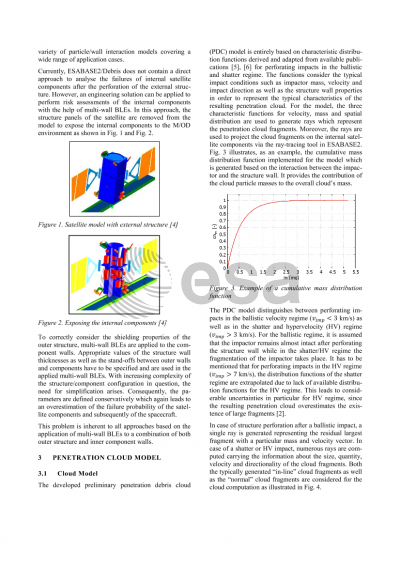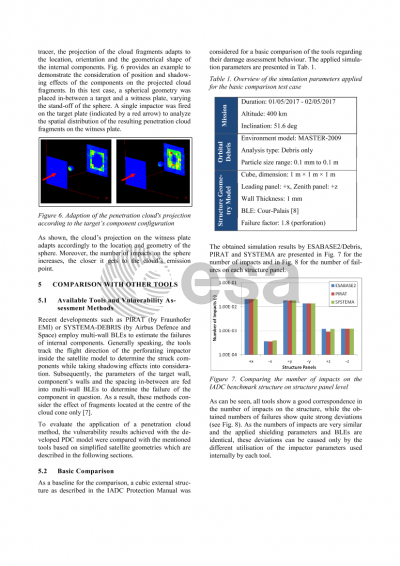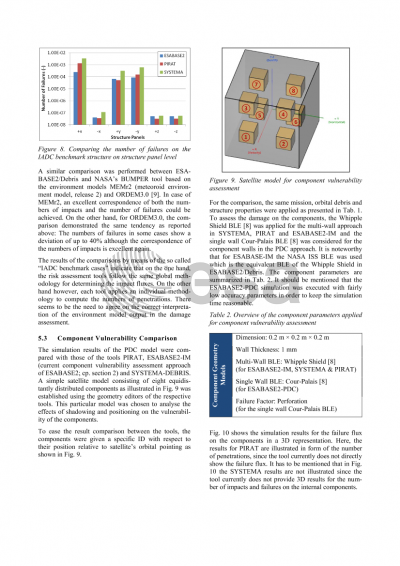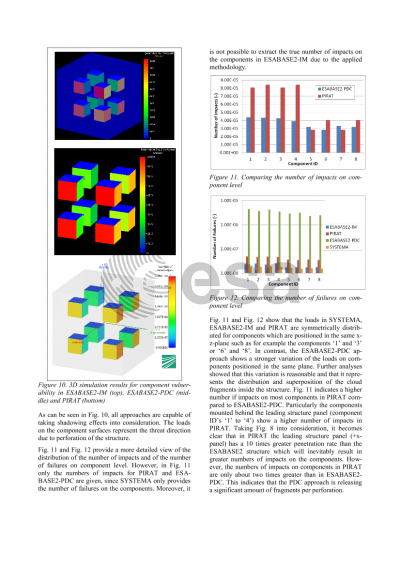Document details

Abstract
Although not necessarily required by the relevant space debris mitigation standards, spacecraft operators and designers have an interest in the prediction of the survivability of their satellite over the mission duration. Besides the usual estimation of the system failure probability due to component failures by means of quality assurance methods, the assessment of system failures due to space debris or meteoroid impacts became more and more important in the last years, making its consideration a relevant requirement. For this purpose so called “impact risk assessment codes” are available, some of which are operational for decades (e.g. NASA’s BUMPER, ESA’s ESABASE/Debris).
However, due to limitations in the exiting tools and models, the method applied for impact risk analyses usually considers the probability of penetrations of the outer spacecraft walls only. The resulting quantity for the spacecraft survivability is the “probability of no penetration” which assumes that such penetration leads to a loss of the satellite. This method obviously leads to an overestimation of the risk posed to satellites by space debris, since the criticality of the affected spacecraft components as well as the shielding of inner components is not considered. In the end, such overestimation of the risk often leads to higher shielding needs and thus an increased satellite mass.
Consequently, methods have been developed to overcome this shortcoming. The classical method as applied in ESABASE2/Debris analyses uses a model of all critical - also internal - components. This requires the establishment of a certain spacecraft model and the consideration of the shielding of the outer walls in the wall specification of the modelled components. Recent developments such as PIRAT (by Fraunhofer EMI) or SYSTEMA-DEBRIS (by Airbus Defence and Space) employ different methods to estimate the failures of internal components: While PIRAT is based on the SRL ballistic limit equation and the consideration of component shadowing, SYSTEMA-DEBRIS utilises a simple cloud model in connection with view factors. An additional new method is under development which is going to be implemented in ESABASE2/Debris. The approach considers the size, velocity and spatial distributions of the debris cloud fragments originating from the penetration of the spacecraft or component wall and tracks this cloud by means of a ray-tracing algorithm. The application of appropriate particle-wall interaction models within the satellite structure allows a detailed description of the damage caused to the subsystems inside.
This paper will outline the problem and describe the methods used in the three tools ESABASE2, SYSTEMA and PIRAT. A comparison of the analysis results for some representative spacecraft configurations will be given and the advantages and shortcomings of the analysis methods will be summarised.
Preview








